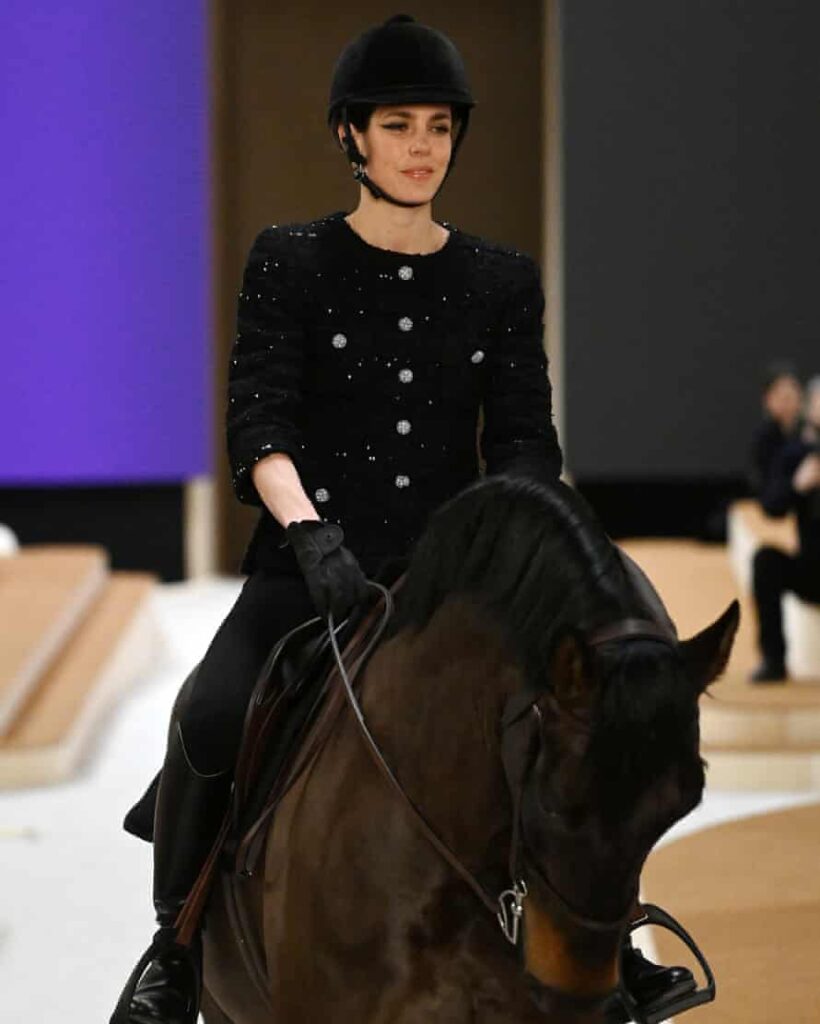Shared from Fashion | The Guardian
The best outfit in which to weather a pandemic? Try a bouclé suit, two-tone kitten heels and a chain-strap handbag with a double C logo.
In defiance of all business forecasts, Chanel is emerging from two challenging years for retail virtually unscathed. Revenues at the luxury brand grew by double digits in the first six months of 2021, the most recent period for which earnings have been published, and the house expects soon to return to 2019 levels of profitability. Strong demand has led to eye-watering price hikes, with some classic handbag styles now priced at 40% more than in the first months of 2020. In anxious times, it seems a Chanel handbag is the gold bullion of fashion.
The late Karl Lagerfeld, who adored a grand party and featured rocket launches and surprise concerts in his shows, would surely have made the first Chanel catwalk of the year a showstopper, with enough action sequences and inside-joke Easter eggs to fill a Marvel movie. But Virginie Viard, who took over at Chanel three years ago, designs fashion rather than fashion shows.
The elegant, minimalist show set was created by the French artist Xavier Veilhan using plywood walkways and inflatable bench seating. A raked-sand catwalk nodded to racecourses while the uneven hillocks for spectators were, a Chanel spokesperson said, inspired by minigolf courses. A few graphic metal sculptures silently rotated, like wagon wheels or stately spindles. Guests were required to show proof of vaccination and a negative antigen result on entry, with N95 masks a mandatory dress code, and social distancing observed on the benches.
The show began with Chanel ambassador Charlotte Casiraghi making a lap of the room on horseback, marking the second time that Viard has featured a horse in one of her shows. Viard is quietly moving her Chanel closer to the spare elegance of Coco, albeit with a dose of Lagerfeld’s 1980s pomp thrown in for fun. Not only was Coco Chanel a keen equestrian who owned a racehorse, Romantica, she was also a pioneer in liberating female riders from cumbersome riding skirts.
In the 1920s Chanel designed her own breeches, based on those worn by men but adjusted to flatter her shape. She styled her breeches and riding boots with a white shirt and tailored wool vest for a modern, elegant look which helped set a new trend. These nuggets of Coco Chanel’s spirit and energy are to Viard’s Chanel shows what showbiz set-pieces were to Lagerfeld’s.

When the models emerged, the first six outfits featured trousers, rather than the traditional skirts. A simple navy tweed trouser suit came first, followed by a dressier take on the same look, with silver edging and balloon shaped trousers. Each look was slightly fancier than the last, but in subtle gradations. There was a jazzy caramel tweed, followed by a jacket worn with feathered trousers, and then a lavender jacket paired with white culottes with laser embroidery.
Two-tone Mary Jane shoes and simple dancing dresses with wide-set straps brought a 1920s feel to evening wear. Even the bride who closed the show as per haute couture tradition looked casual, in a loose dress and no veil. Viard highlighted as a key piece a long gown entirely embroidered by the venerated Lesage atelier with “constructivist camellias” in black, white and coral beads, which she described as “references [which] also belong to Gabrielle Chanel, of course. It’s like a conversation that crosses time.”
Images and Article from Fashion | The Guardian

